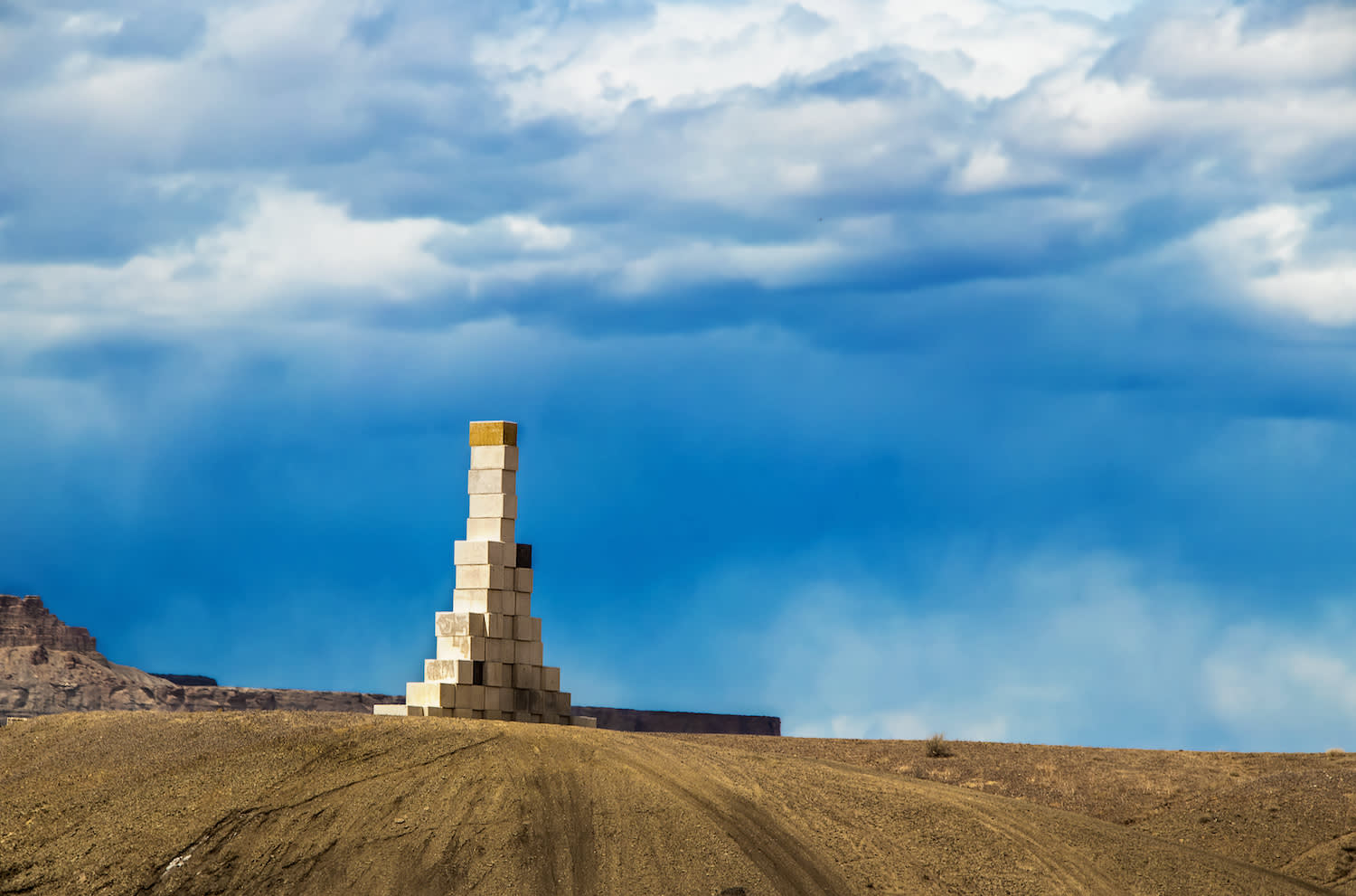
Land Art in Utah
Pop quiz: What do 6,650 tons of basalt rock, four concrete tubes and five tons of welding rods have in common?
Answer: They are all used to make land art formations found around Utah. (There's no way you were going to guess that, we're pretty sure.)
Check out these places where artists felt compelled to dig out a little piece of the landscape and call it their own.
The Spiral Jetty
Rozel Point, Great Salt Lake
Artist Robert Smithson needed something productive to do. Thus, a giant art piece was born in 1970. The spiral's coil is 1,500 feet long and approximately 15 feet wide. The jetty disappears and reappears depending on lake water levels — drought years bring it out for all to see. It’s a bit of a trek to see it, but you’ll probably get the most Instagram likes you’ve ever had after you post a pic of this prehistoric landscape.
Sun Tunnels
Wendover
Nancy Holt, an artist exploring the human perception of time and space, earth and sky (that’s deep stuff), built the Sun Tunnels in a remote valley in the Great Basin Desert, as a unique art project completed in 1976. The four tunnels are concrete tubes, 9-feet high and 18-feet long, and are laid out in an X shape, each drilled with holes to pattern the constellations of Draco, Perseus, Columbia, and Capricorn.
Holt has said her tunnels bring the sky down to earth, with the dazzling effect of light bouncing through the tubes. It’s kind of a trippy experience. And, if that’s not enough, two of the tunnels align with the setting and rising sun during the summer solstice, and two line up during the winter solstice. She thought of everything.
Metaphor: The Tree of Utah
Bonneville Salt Flats, along I-80 west of Salt Lake City
The Tree of Utah isn’t a real tree, but it resembles one. It’s a massive 90-foot tall sculpture that towers above the Bonneville Salt Flats along one of the most boring stretches of highway in the West. The artist, Karl Momen, basically plopped it down in the middle of nowhere, we think, to keep Wendover-bound tourists from nodding off. It is one weird and crazy sight to behold. The tree is both interesting and bizarre, and leaves you feeling inspired and confused. That’s always a wonderful thing.
Gilgal Sculpture Garden
749 East 500 South, Salt Lake City
You have really got to go looking in order to find this hidden little art gem because the Gilgal Sculpture Garden is far from obvious. It’s nestled within a downtown Salt Lake neighborhood, in the middle of the block behind a couple of houses and businesses. You’ll feel like you’re trespassing, but you're not. They encourage visitors.
The garden was designed and created by Thomas Battersby Child, Jr., who wished to give physical form to his deep-felt beliefs. He hoped the garden would inspire viewers to ponder “the unsolved mysteries of life” and struggle to find their own answers. Within it, you’ll find 12 sculptural arrangements and over 70 stones engraved with scriptures, poems and literary texts.
It’s really hard to explain, but super interesting to experience, so go see it for yourself.
The Ratio and Elements
Along I-70 near Green River
Ratio and Elements were commissioned by Herbert Steiner — the owner of the land on which they stand — in an effort to commemorate his legacy.
Ratio, a 44-foot high, 42-foot wide sculpture made up of 53 cement blocks, is based on the golden ratio, which is commonly found in nature. Each block weighs 4.5 tons and is 39-by-39-by-68 inches. And if that’s not impressive enough for you, the center column of the piece — which reaches 42 feet — is topped by a gold-leafed block.
Ratio’s younger sibling, Elements, contains four 132-foot-high columns (including one topped in 23-carat gold) which are designed to represent the four elements: water, earth, wind and fire. Coincidentally, the sculpture was completed in September (of 2013) and now you’ve got “Ba-dee-ya” stuck in your head for the rest of the day. You're welcome.
The two installations were completed by Australian sculptor and photographer Andrew Rogers. You can view more of his work on his website.